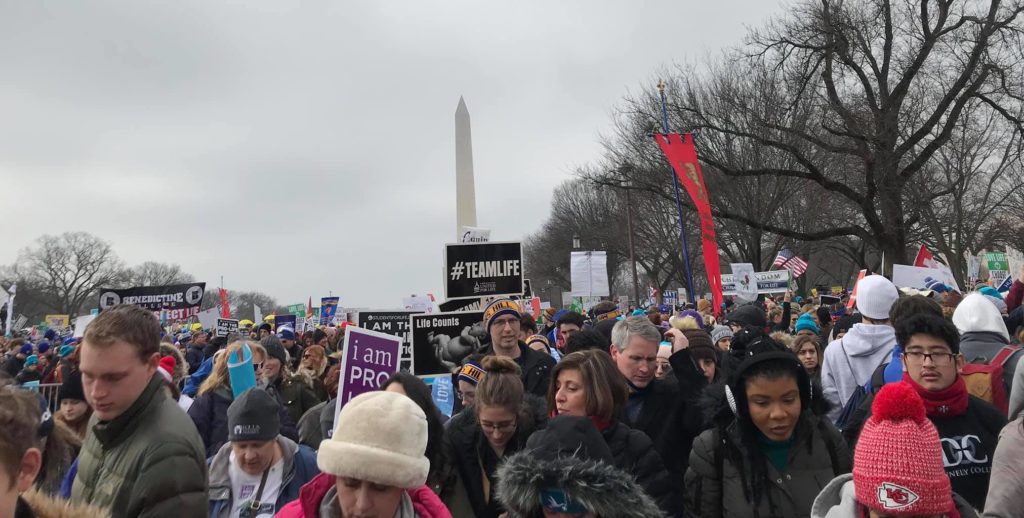The Creation of Adam by the Italian artist Michelangelo © Nrf
From the first known humans living more than 5 million years ago to the nearly 8 billion modern humans we are today, humankind has come a long way.
It is believed that the first humans appeared in Africa and then came to Asia and Europe. These first humans on Earth used precarious stone or bone tools, lived in caves and fed mainly on what they could hunt, living a life that was very different and dangerous from our lives today. Anthropologists suggest that modern Homo Sapiens appeared on the world stage about 40,000 years ago. Evidence of evolved consciousness, more advanced tools, paintings on cave walls, burial rituals and even jewelry are proof of the early evolution of the human species, which was able to develop and thrive.
After the Great Famine (1315-1317) and the Black Death (1350), both of which decimated the world’s population, the number of people on the planet grew exponentially over centuries – from about 370 million people in the 14th century to about 1 billion in the 20th.
The world’s first billion inhabitants were officially recorded around 1800. The Industrial Revolution brought a new era of development and growth to countries such as Great Britain or the USA, also in terms of population. Combined with a decline in infant mortality and improvements in sanitation, hygiene and food supply, this led to rapid population growth.
However, the highest growth rates were recorded in the 20th century, naturally favoured by better living conditions, major discoveries in medicine and technological progress. With growth rates of 1.8% per year (between 1955and 1975) or even 2.1% (between 1965and 1970), it is only natural that the human population increased so dramatically. In only about 220 years, the earth’s population exceeded 7 billion, and is expected to reach 8 billion by 2023. According to the United Nations, it increases by more than 90 million people every year.
In the course of humanity’s long history, experts estimate that around 109 billion people have lived and died on this planet.

Asia is the most populous continent and is home to 60 % of the world’s population (4.64 billion people). Africa comes next with 17 % (1.34 billion people). Among the ten fastest growing regions in the world, nine are in Africa. On the other hand, Bulgaria is projected to be the country with the fastest population decline (22.5 %) between 2020 and 2050 (source: United Nations).
The sex ratio in 2021 will be 101.68 males to 100 females, with 50.42% males (3.97 billion) and 49.58% females (3.90 billion). This means that there are 65.51 million more men than women in the world (source: Statisticstimes.com).
Although there are more women than men in most countries, the two most populous countries on earth, China (1.41 billion people) and India (1.37 billion people), have a surplus of men to make up the difference in global numbers.
This gender imbalance could have some logical explanations. In China, for example, boys have been favoured for many years. This is partly economic, as men can earn and produce more in agriculture, and has also been encouraged by the “one-child policy”, a nationwide family planning regulation introduced in the country in 1980. The strict demographic policy to slow down China’s population growth, which was considered far too abrupt and damaging to the country’s economic ambitions at the time, and also sex-selective abortions led to the current situation. The “one-child policy” officially ended in 2016, but its consequences are still being felt. Currently, there are over 33 million more men living in China, so the birth rate is low, the labour force is slowly decreasing and the Chinese population as a whole is ageing.

In India, too, the gender ratio is unbalanced, with 54.5 million more men. The reason for this is deeply rooted in old cultural beliefs. Indians prefer boys because they see them as the successors to the family legacy and believe that men will protect parents in old age. Daughters tend to leave the family home as soon as they are married and also require higher traditional costs, such as dowries. Malnutrition and neglect of girls are also often a cause of this demographic reality in India.
Globally, the sex ratio at birth is 107 boys to 100 girls. In general, there are more men than women worldwide, but more women over the age of 50. This is partly due to the two previous catastrophic world wars, which were mainly fought by men and resulted in millions of male casualties. General life expectancy is also slightly different for men and women. While men generally have a life expectancy of at least 75.1 years (2020 statistics), women generally live five years longer, so that in the 90-94 age group, women outnumber men by a ratio of two to one.
The median age of people worldwide is currently 31 years. It has increased steadily, especially since the 20th century. Compared to an average age of 21.5 years in 1970, this is a considerable difference, which clearly shows the general trend of an ageing world population. The citizens of Monaco have the highest average age (55 years), followed by Japan, which also has a record number of centenarians. China also has a high average age (38.4 years) and is also the country with the largest number of old adults (65+) with 166.37 million people. If we talk about percentages, Japan with 28.2%, Italy with 23%, Germany with 21% and the USA with 16% are among the countries with the highest percentage of old people. (Source: www.prb.org).

In general, Southern and Western Europe (Greece, Portugal, Malta, Spain, Slovenia, Romania, Germany, France) are the regions with an elderly population, where on average 21% of citizens are 65 years or older. This situation will certainly seriously affect the fertility and also the reliable labour force of these countries in the not too distant future. Problems with the pension system and its sustainability are already foreseeable.
On the other hand, the youngest region in the world, with 46% of the population under 15 years of age, is middle Africa. Some Latin American countries also have good figures.
The Covid 19 pandemic has affected the world’s population and will continue to do so. The infectious disease has claimed the lives of more than 6 million people worldwide, but the long-term impact has yet to be studied. More data is needed to properly assess the global impact on life expectancy and also on fertility trends.
That being said, the global fertility rate has been steadily declining in recent decades, from 3.2 in 1990 to 2.3 in 2020.
The total fertility rate (TFR) is a standard demographic indicator used internationally to estimate the average number of children a woman will have in her lifetime, taking into account current birth trends. It is calculated by adding the average number of births per woman in the five-year age groups. While the total fertility rate is currently 2.3, there are large fluctuations worldwide. With TFR values ranging from 0.81 in South Korea to 7 in Niger and 6.1 in Somalia, this demographic indicator highlights the wide disparities between different regions of the world. Studies show that women who have access to reproductive health services are more likely to be able to lift themselves out of poverty, while those who work are more likely to use birth control. Moreover, countries where governments promote family planning and responsible parenthood have reasonable fertility rates.

In addition to the ageing population, one of the reasons for declining fertility rates is the general tendency, especially in highly developed countries, to delay motherhood. In Europe, for example, 25% of all new mothers are 35 years or older. In contrast, in low-income countries, the number of births to teenage mothers is quite high. 16 % of all births in sub-Saharan Africa are to mothers between the ages of 15 and 19. Lack of information, unsafe sex education and also the lack of available contraceptive methods are the main reasons for this shocking reality. The lives of these young mothers will be changed forever and their chances for a better education and a decent economic situation will be diminished.
The total fertility rate of 2.1 is generally considered the replacement level, i.e. the average number of children a couple needs to replace themselves on earth.
Experts predict that the total fertility rate will fall below replacement level in the 21st century and subsequently lead to a much-needed “zero growth” in the world’s population by 2100.
Rising costs of living, changing social norms and also access to sexual education from an early age are possible factors in the projected decline in the birth rate.
In Europe, the average birth rate is currently around 1.55 (already well below replacement level), with rates higher in France, Romania, Sweden and Ireland and among the lowest in Portugal, Spain, Greece, Italy and Malta (1.23).
In recent decades, the wave of emigration in which millions of young Eastern Europeans left their home countries has led to a sharp population decline in countries such as Ukraine, Romania, Moldova or Bulgaria, and this trend is expected to intensify over time. On the other hand, the influx of emigrants to countries like Germany is expected to help inject fresh blood into the population and the ageing labour force.
In the Americas, the birth rate has declined across the board. From an average of 1.6 in North America to a slightly higher 2.1 in the southern and central parts of the continent, these low birth rates have resulted in modest population growth accompanied by an ageing population. In an attempt to combat the decline in births, although the stated motives were more religious and spiritual, the US Supreme Court recently overturned the 1973 Roe v. Wade ruling, striking down the 49-year-old constitutional right to abortion.
This paved the way for many of the 50 US states to officially ban abortions. Worldwide, 5% of all women of reproductive age are not allowed to have an abortion under any circumstances, while about 36% are only allowed to do so under certain regulated conditions. (Source: Centre for Reproductive Rights).
Countries that have banned abortions include Egypt, the Dominican Republic, the Philippines, Congo and Senegal, as well as Malta and Poland in Europe. However, history has shown (Ireland is one example) that banning abortions one way or another has not prevented the procedures, but only made them more expensive (sometimes requiring travel to another country or region) and even life-threatening.
For years, filmmakers have exposed these kinds of dramas and tried to raise awareness of the issue under discussion. From the famous “Dirty Dancing” (1987) to the Palme d’Or and Goya Award winning film “4 Months, 3 Weeks and 2 Days” (2007) to the most recent film “Happening” (2022), all these films tell similar stories and dramas that could and should be avoided.

The total number of births is projected to increase from the current 140 million per year to 141 million per year in 2040 and then decrease to 126 million per year around 2100. At the same time, the total number of deaths worldwide is likely to increase from 57 million per year in this decade to almost 121 million in 2100.
The birth rate issue can be viewed from two different angles. On the one hand, a low birth rate leads to an ageing population over time; on the other hand, it slows the pace of global population growth, calming fears of an impending demographic apocalypse. More than at any time in recent years, there is now talk of possible famine and severe food shortages because of the war in Ukraine and also because of rising energy prices, which now seem to be out of control around the world. The latest projected trends could perhaps allay the major concerns of recent decades about the exponential growth of the world’s population with a simultaneous shortage of resources.
The prospect of a rapidly growing world population has been a source of anxiety for many years, but although the current economic situation is a cause for concern, there seems to be a glimmer of hope.
The United Nations continues to project that the world’s population will reach 11.2 billion by 2100. However, a study by the International Institute for Applied Systems Analysis (IIASA) in Vienna confirmed in 2014 that the world’s population will probably peak around 2040 and then decline to about 9 billion people by 2100. A few years later, the Institute for Health Metrics and Evaluation (IHME) in Seattle, USA, published a new study stating that the population peak will be reached around 2064 and will decline to about 8.8 billion people by 2100 (source: www.nature.com).
In view of the strong population decline in Spain, Italy, Thailand or Japan, the main difference between the projections of UN and those of the two institutes mentioned lies in the different forecasts for the fertility rate, which are more optimistic under UN.
The importance of accurate and reliable projections is enormous, as they will shape public policy in most countries and determine the future of our planet. So far, the United Nations’ forecasts have proven to be accurate.

Collecting accurate data is an essential element. One of the modern tools for determining population density today is mobile phone traffic monitoring. This allows researchers to detect significant movement trends in local populations, which also leads to better estimates for the future. However, the old methods of population counting are still in use, and national censuses remain the most important resource considered when setting population policy.
In recognition of the importance of global population issues, 11 July has been officially declared “World Population Day”.
No matter which institute or official organisation, all agree that global population growth is slowing. This should stimulate discussions and debates about the future of humanity and the danger of uncontrolled population growth on our planet. However, all agree that demographic trends need to be closely monitored as they are one of the key factors for human survival on Earth.
“Instead of controlling the environment for the benefit of the population, perhaps it is time to control the population for the survival of the environment” (David Attenborough).

